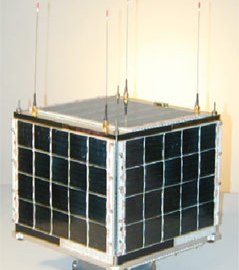Nano-Satellites to Hunt New Planets

What’s the Latests Development?
What is perhaps one small step for a few scientists may be a giant leap for satellite technology. Researchers at the Draper Laboratory and M.I.T. have created a “nanosatellite” called ExoPlanetSat which, no bigger than a loaf of bread, packs powerful, high-performance optics and new control and stabilization technology in a small package. “ExoPlanetSat will search for planets by measuring the dimming of a star as an orbiting planet passes in front of it, a technique called transit observation. The satellite’s light detector has two focal plane arrays—one for star tracking and for the transit observations.”
What’s the Big Idea?
While ExoPlanetSat is scheduled to launch alone by 2012, researchers envision entire groups of nanosatellites performing functions outside the boundaries of traditional satellite capabilities. Particularly challenging using small spacecraft is stabilizing them. “To precisely control and stabilize ExoPlanetSat, Draper and MIT researchers built custom avionics and off-the-shelf reaction wheels, a type of mechanical device used for attitude control, at the base of the spacecraft to maneuver it into position.” Eventually researchers hope to launch entire fleets of nanosatellites to monitor the brightness of nearby stars.





